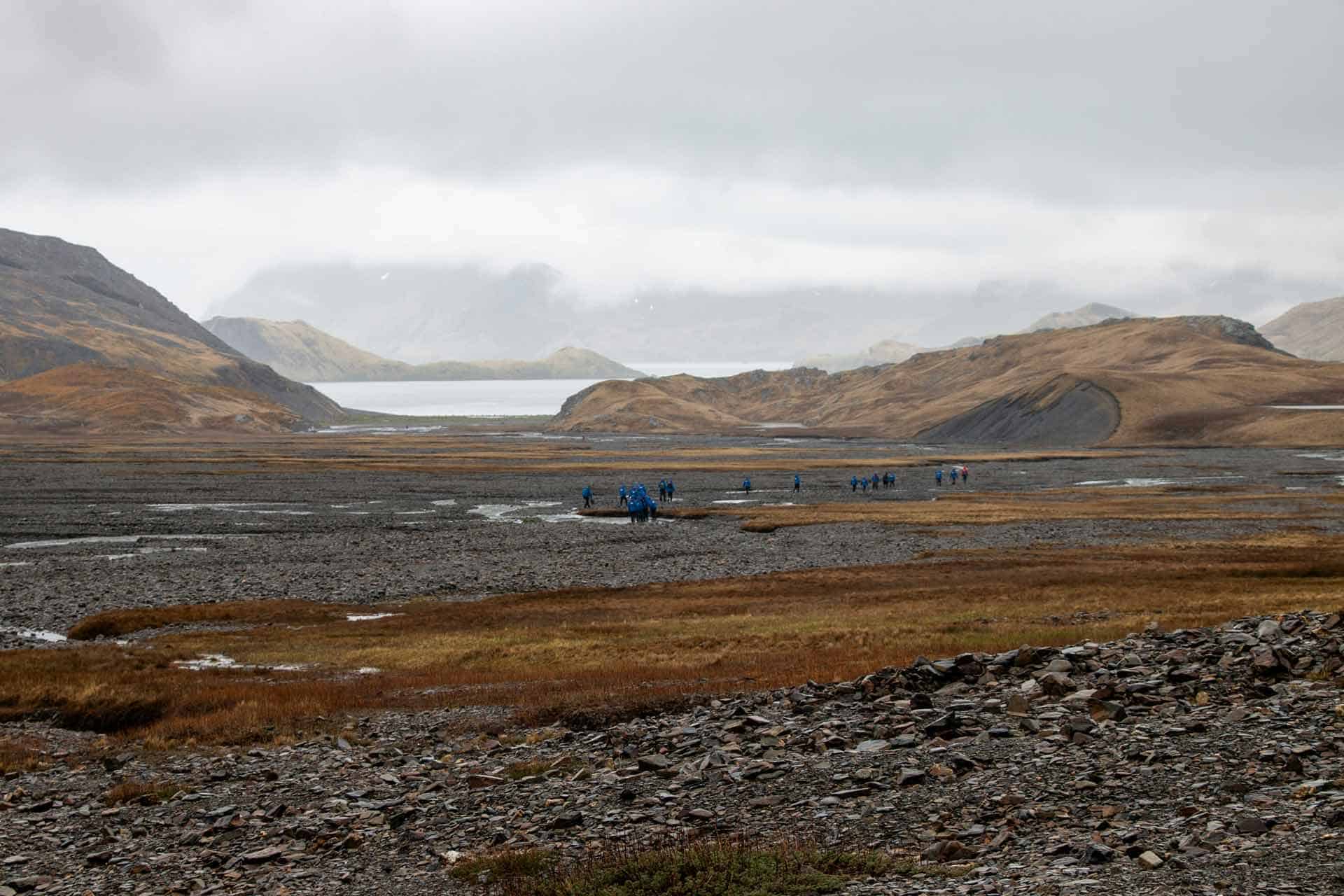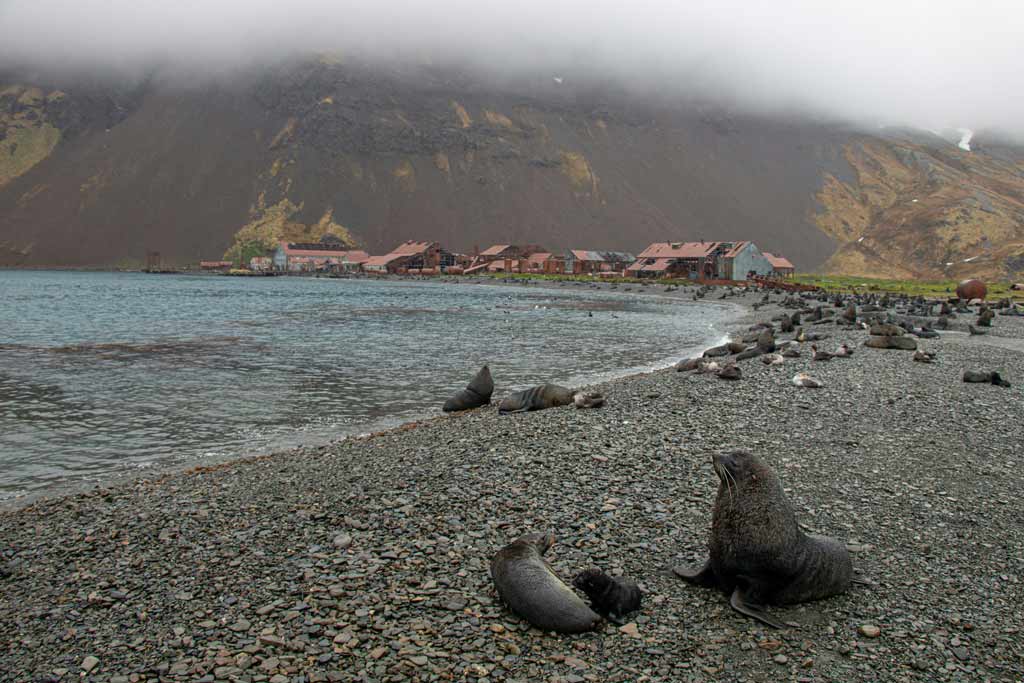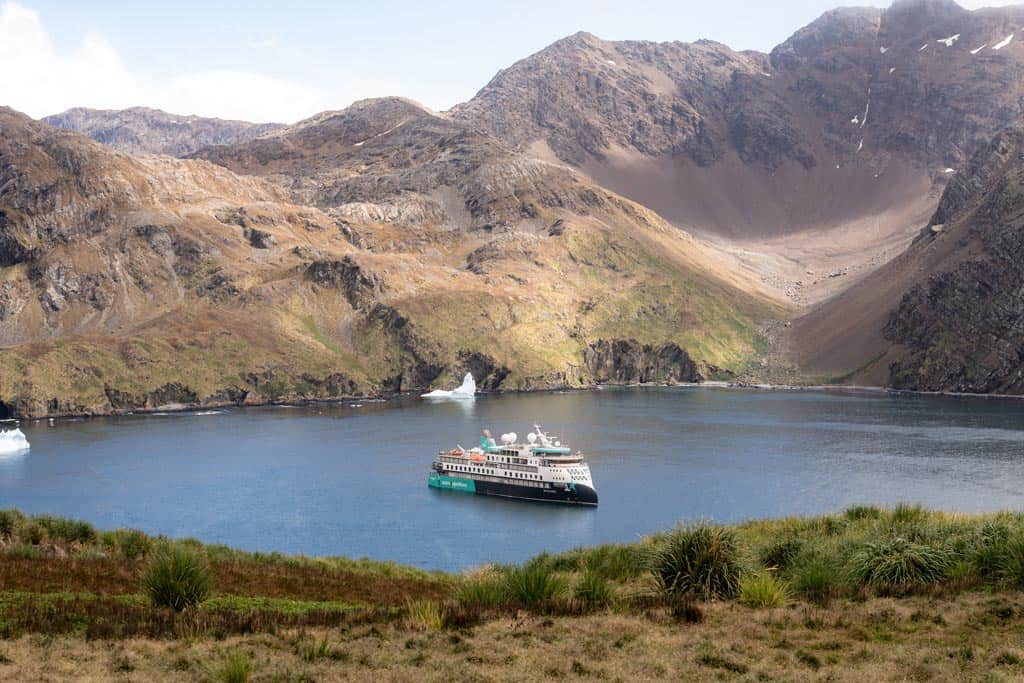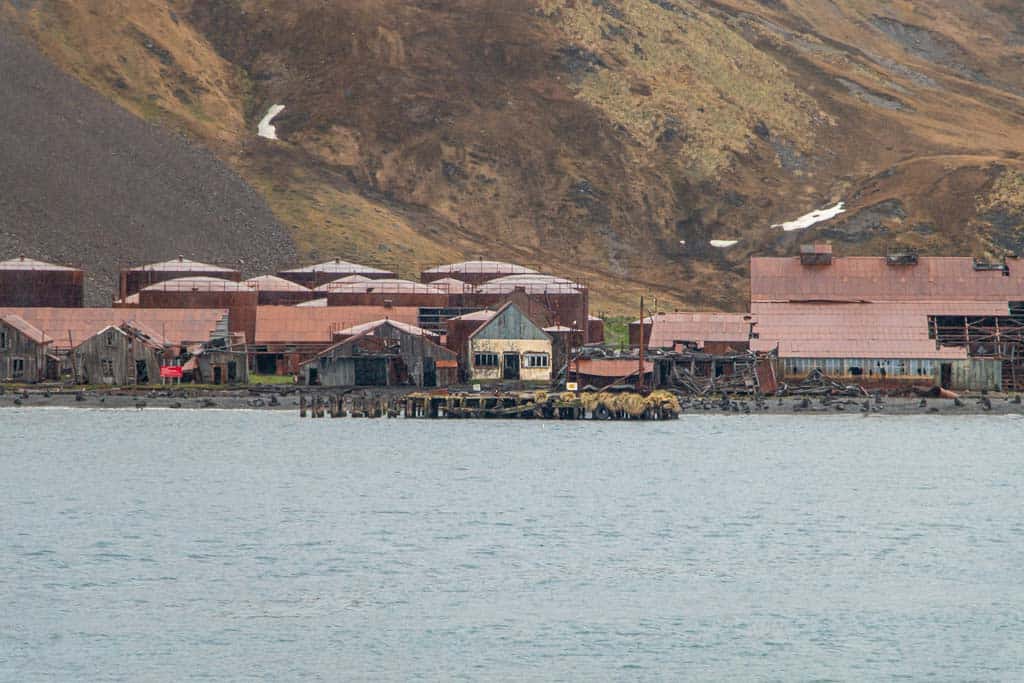
Your guide to Stromness South Georgia, a historic whaling station on the north coast that was part of Sir Ernest Shackleton’s epic overland journey.
Stromness sits on the rugged north coast of South Georgia. Once a thriving whaling station, its rusting machinery and collapsing buildings now stand in silence.
It was here that Sir Ernest Shackleton and his men brought their epic ordeal to an end. In 1916, after an unimaginable journey across the mountains and glaciers of South Georgia, Shackleton’s team finally reached Stromness to seek rescue.
Although nowadays the station itself is off-limits for safety reasons, visitors can still visit Stromness and marvel at the dramatic scenery surrounding it.
If you’re planning an expedition to South Georgia soon and hope to include Stromness on your journey, here’s everything you need to know.
 Seals at Stromness South Georgia
Seals at Stromness South Georgia
History of Stromness South Georgia
If you know the history of South Georgia, you have likely heard of Sir Ernest Shackleton’s daring adventure. Stromness Harbour played a pivotal role in that story.
After their desperate voyage from Elephant Island, Shackleton and his men made the perilous overland trek across South Georgia. In 1916, they reached Stromness, completing the final leg of the legendary Shackleton Walk and arriving at the home of the whaling station manager, where they finally secured rescue for their stranded crew.
Once a bustling whaling station, Stromness later operated as a ship repair yard that serviced vessels working in the Southern Ocean and the South Sandwich Islands.
Today, it stands as an abandoned whaling station, its rusting remains a haunting reminder of a bygone era.
Visitors to this remote corner of the South Atlantic won’t find a working settlement anymore. However, the echoes of history and the dramatic landscapes make it one of the island’s most compelling sites.
Read about more historic locations with our guide to Deception Island, Antarctica: Land of Ice and Fire
How To Visit Stromness South Georgia
Here’s your guide to exploring Stromness on South Georgia Island! There are no roads or airports on South Georgia, so the only way to reach Stromness is by expedition ship.
Most voyages sail from the Falkland Islands or through the Weddell Sea, before making landings along South Georgia’s remote shoreline.
Expedition ships typically anchor in Stromness Harbour. Passengers are then brought ashore by Zodiac boats to view the rusting remains of the old shore station and admire the dramatic scenery of Stromness whaling station.
While entry to the abandoned buildings is prohibited for safety reasons, the area offers striking views across the bay and nearby historic sites, including Leith Harbour, another former whaling hub further east.
 Expedition ship near South Georgia Island
Expedition ship near South Georgia Island
Best Time to Visit Stromness
The best time to visit the whaling station at Stromness is during the austral summer, from November to March.
During the austral summer, the weather is relatively milder and the seas are calmer around South Georgia. This short season gives visitors the best chance for landing safely along the island’s rugged southern coast.
Like the rest of South Georgia, Stromness Bay is also home to some fascinating wildlife. And if you come here during the austral summer, you’ll find that these animals are at their most active.
You’ll see penguin colonies, fur seals, and elephant seals crowding the shores.
The austral summer is also the ideal time to reflect on Stromness’s layered past, from its early days as a ship repair yard to its role in Shackleton’s legendary expedition.
Outside of summer, harsh weather, heavy seas, and ice make visits almost impossible.
Important Note! Before you book any international trip, we honestly recommend getting travel insurance. You never know when things will go wrong, and medical bills can add up quickly if you get sick or injure yourself overseas.
Our personal recommendation based on our own experience is World Nomads.
What to Expect at Stromness
A visit to Stromness is as much about atmosphere as it is about history. Once a bustling whaling station, later a floating factory and ship repair yard, Stromness now lies in haunting silence, its rusting structures and collapsing machinery sealed off for safety.
Set at the head of Stromness Harbour in Stromness Bay, the site is usually admired from a distance.
Expedition ships often offer Zodiac cruises to Stromness Bay, allowing visitors a chance to glide past the Stromness harbour and see the glaciers and mountains.
Expect to see Antarctic fur seals lounging on the beaches and King penguins gathered in nearby colonies.
While the wildlife is a highlight for many visitors, those with an interest in the history of the Antarctic will also find Stromness a fascinating place to explore.
As mentioned, this was the final leg of Shackleton’s route, where he and his men ended their desperate crossing of South Georgia and reached the home of the station manager to secure rescue.
Nowadays, Stromness remains one of the few places where visitors can experience the raw beauty of nature and the echoes of Shackleton’s legendary journey.
 Ruins at Stromness South Georgia
Ruins at Stromness South Georgia
Wrapping Up
Despite its remote location, Stromness South Georgia is well worth the effort and the cost of visiting here.
For travelers fascinated by polar history and the legendary journey of Sir Ernest Shackleton, few places capture the spirit of survival and exploration as vividly as this abandoned whaling station on South Georgia.
In Stromness, history, wildlife, and wild landscapes converge, offering an experience you’ll carry long after you’ve left the island behind.
DISCLAIMER: Some of the links in this article are affiliate links, which means if you book accommodation, tours or buy a product, we will receive a small commission at no extra cost to you. These commissions help us keep creating more free travel content to help people plan their holidays and adventures. We only recommend the best accommodations, tours and products that ourselves or our fantastic editorial team have personally experienced, and regularly review these. Thanks for your support, kind friend!
